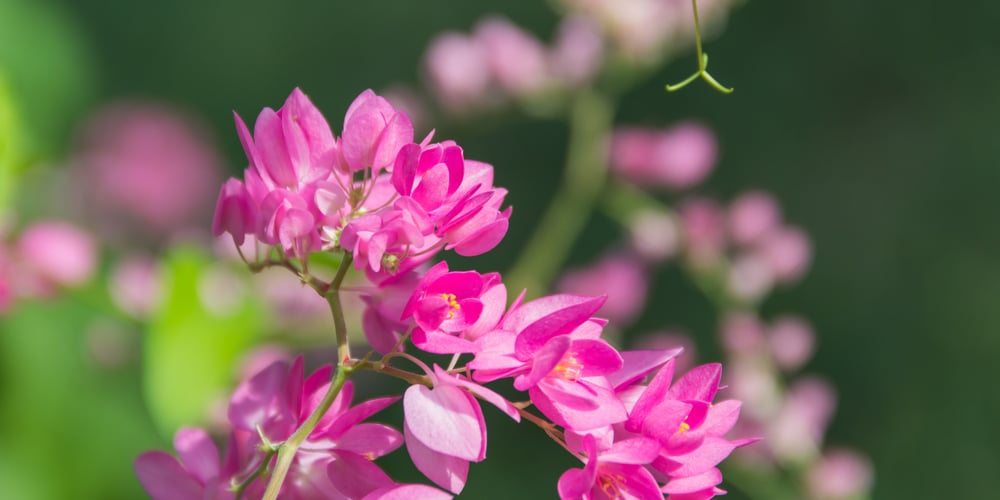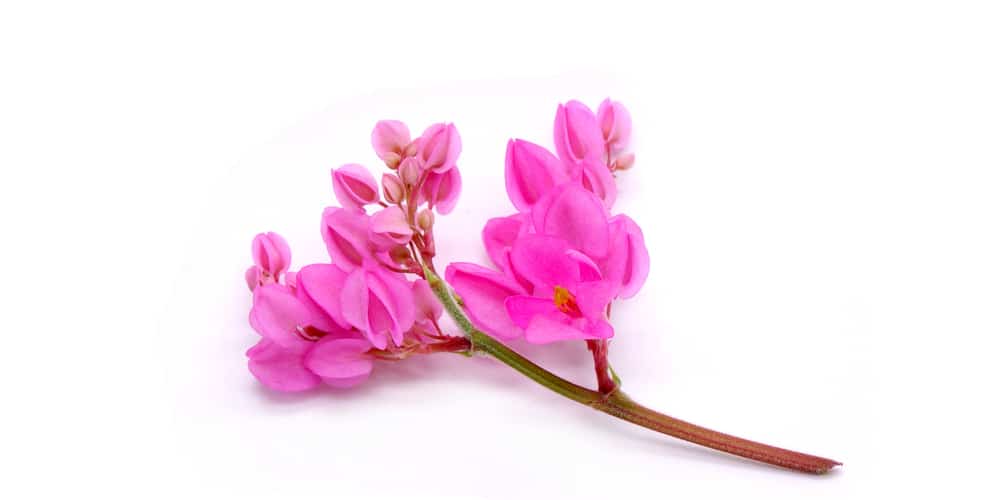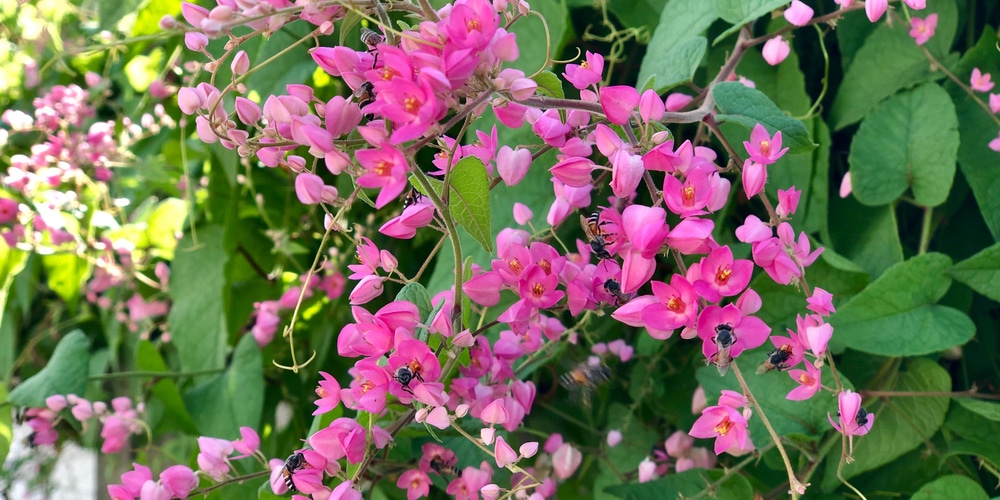Coral Creeper (Barleria Repens), also known as “Cadena de Amor” (literally, “Love’s chain), is a stunning flowering shrub that produces soft and delicate-looking reddish blooms all year round. Regardless of where you place it, Coral Creeper will make any garden look more elegant and “jungly.” To learn more about this plant, keep reading our essential guide!
What you Need to Know About Coral Creeper

Coral Creeper is a versatile plant that you can grow as a border hedge or cascading over a container. It also performs well as a ground cover.
Under ideal conditions, it can grow fast and reach between one to two feet in height. However, that also means that you will have to prune it regularly to keep it under control. Its green, dark, and dense foliage create an attractive backdrop in your garden. The flowers it produces are large and bright pink to deep mauve: they will add lots of color and texture to your garden. Plus, this flowering shrub will attract plenty of beneficial pollinators that will make your yard more lively.
If you have dogs or cats wandering about your garden, you will have nothing to worry about with this plant: it is not toxic and presents minimal risk to most animals.
How to Care for Coral Creeper
Coral creeper is not challenging to grow. However, to make it thrive, you must ensure you meet its basic requirements. Jump to the following section to learn how to recreate the most optimal environment for this stunning and colorful plant. Don’t forget that this plant might be invasive in some regions. Check if it might hurt your garden before planting it in your yard.
Light
Coral creeper does best in sunny locations but thrives in partial shade too. Pick a spot where your plant receives some light, at least during the morning. If the light is too strong, consider adding protection from the afternoon sun to prevent its leaves from turning pale over time. Consider training it over a trellis or another support to maintain an attractive shape.
Water and Soil Needs
Coral creeper prefers slightly acidic to neutral soils but can adapt to various conditions. Ensure you keep the ground moist. Consider adding mulch around your plant to improve growing conditions and enrich the nutrient content. Even though this plant prefers good drainage and moisture, it can tolerate drought once established.
The plant requires moderate watering: wait for the soil to dry before adding more water to prevent it from saturating and rotting your plant’s roots. Decrease frequency in the winter.
Temperature Requirements
Coral creeper likes the warmth: if you plant it somewhere where winters are harsh, it won’t survive. Its optimal growing temperature is between 50 to 59F, but it will also tolerate higher and lower temperatures.
What USDA climate zone can it survive?
This plant prefers a warm environment: it will perform well in hardiness zones between 9 to 11.
Fertilizer
This plant doesn’t need fertilizer: it will thrive even without it. If you are growing your plants are ground covers, do not bother adding anything. However, if you place coral creeper in a container, you can add some all-purpose fertilizer during the spring, summer, and fall. Doing so will increase blooming. Avoid fertilizing your plant during the winter, as you might damage it.
Common Diseases
This plant isn’t susceptible to diseases. Pests won’t attack it, so you won’t have to worry about purchasing chemicals or protecting your plant from diseases. However, caterpillars might chew your plant’s leaves. Luckily, they won’t kill your plant, so you can handpick them to eliminate the problem.
Common Problems
Because this plant adapts to various conditions, you won’t face any problems when growing it. Don’t forget to prune it at least once per year to prevent it from overtaking your garden!
Propagation
You can propagate coral creeper by seed or cuttings. The latter option is the most effective, especially when you carry it out in the spring or summer. Cut an 8 to 10 inches long piece of stem. Place your cutting in a container with a suitable potting mix and drainage holes. Cover it with soil to support its growth and water it frequently. Roots will develop in a couple of weeks. After that, you can transfer your plant outdoors.

